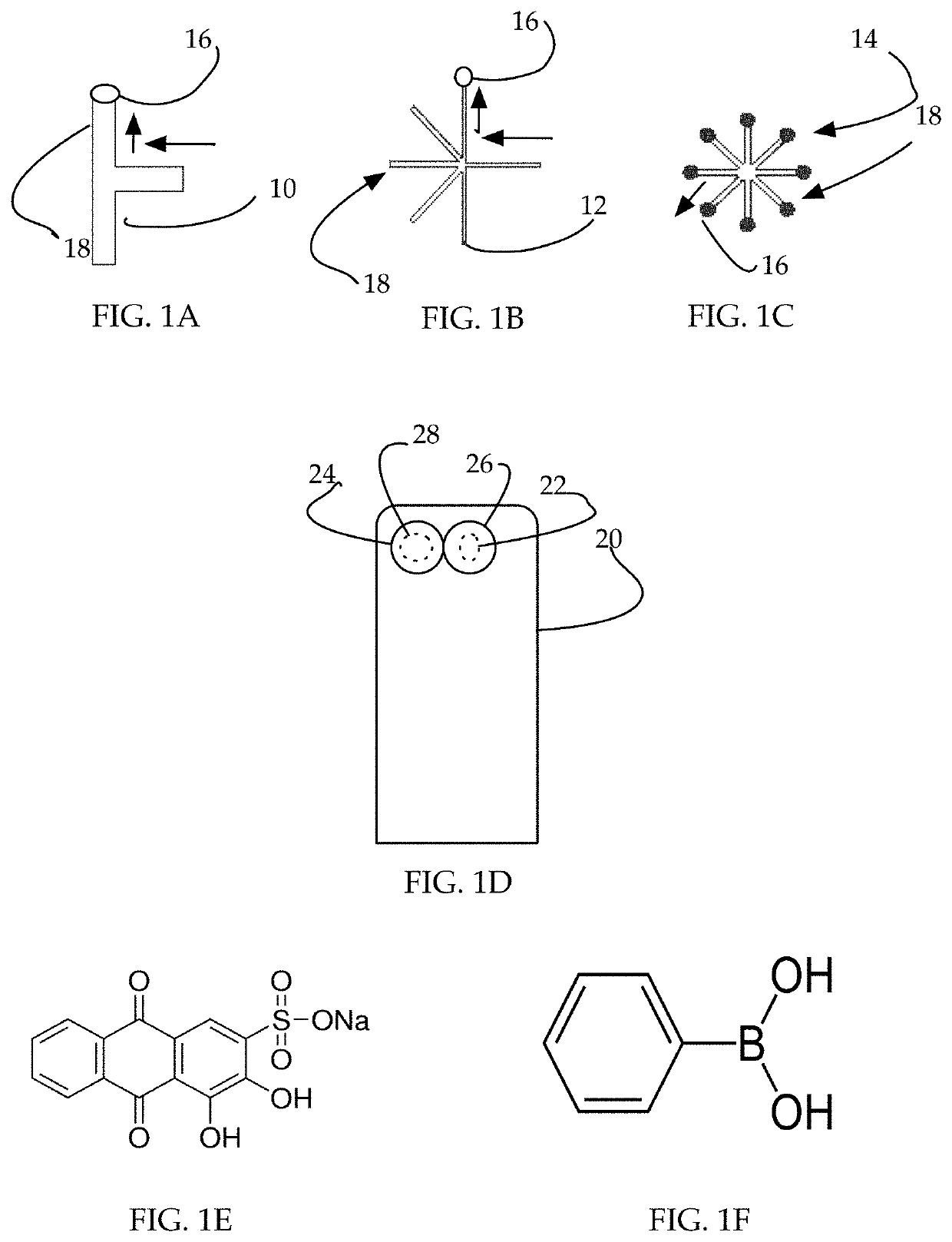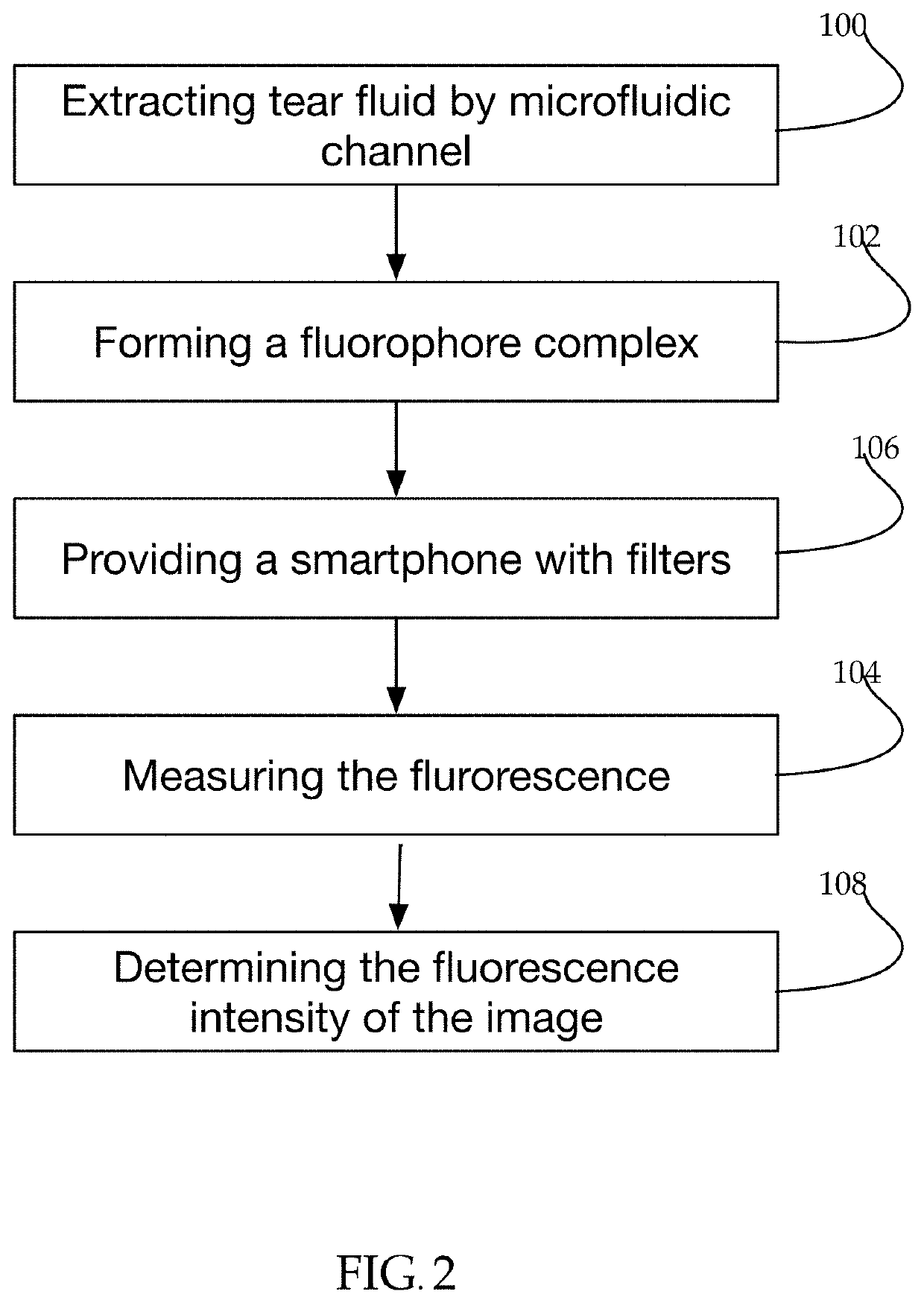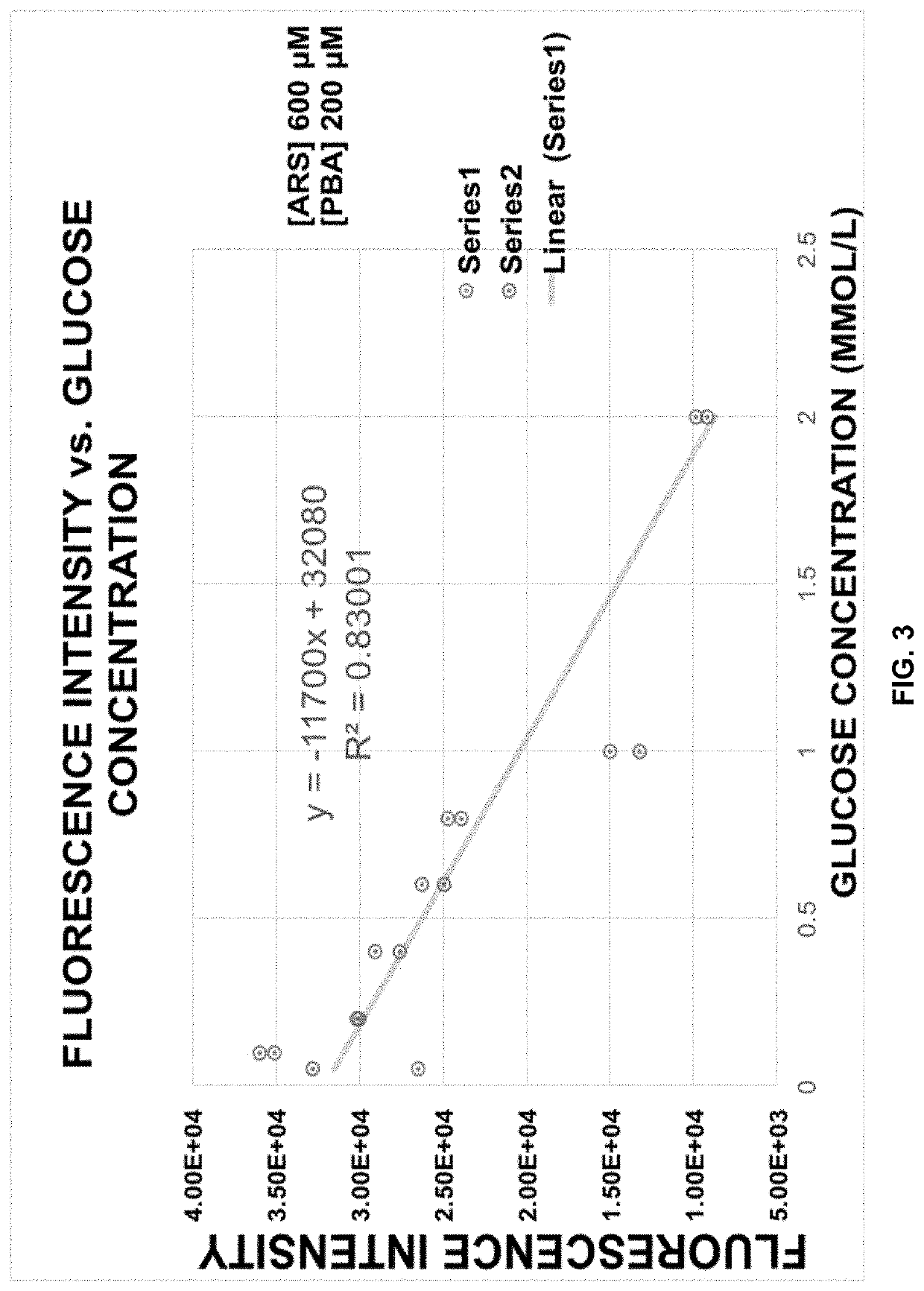Method for monitoring COVID-19
- Summary
- Abstract
- Description
- Claims
- Application Information
AI Technical Summary
Benefits of technology
Problems solved by technology
Method used
Image
Examples
Embodiment Construction
[0058]Herein disclosed is a system, a non-invasive method and a kit for measuring blood glucose levels in patients.
[0059]Glucose does not fluoresce under normal circumstances. In order for the system to measure the blood glucose level, bodily fluid is combined with a fluorophore complex (fluorophore and glucose-binding probe such as a lectin). The fluorophore complex combines with glucose in the sample, causing the glucose-fluorophore complex to absorb light at a known wavelength and emit light at a known wavelength.
[0060]In one embodiment, the sample is saliva. Collecting saliva is noninvasive, painless and easily collected. Saliva glucose levels are higher in type 2 patients than in type 1 patients. Saliva would be preferably tested in vitro using a suitable sampling device.
[0061]In a further embodiment, the sample is tear fluid. FIG. 2 shows the correlation between tear glucose levels and blood glucose levels.
[0062]Collecting tear fluid is highly advantageous. Tear fluid is highl...
PUM
 Login to View More
Login to View More Abstract
Description
Claims
Application Information
 Login to View More
Login to View More - R&D
- Intellectual Property
- Life Sciences
- Materials
- Tech Scout
- Unparalleled Data Quality
- Higher Quality Content
- 60% Fewer Hallucinations
Browse by: Latest US Patents, China's latest patents, Technical Efficacy Thesaurus, Application Domain, Technology Topic, Popular Technical Reports.
© 2025 PatSnap. All rights reserved.Legal|Privacy policy|Modern Slavery Act Transparency Statement|Sitemap|About US| Contact US: help@patsnap.com



